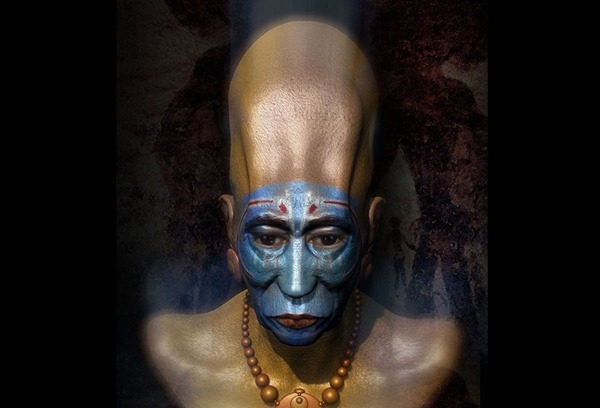Paracas mysterious skull is not human DNA
The results of DNA analysis of 3,000-year-old Paracas skulls have been controversial, suggesting that Paracas are not among the people we have ever known.
The mystery of Paracas skulls dates back to 3,000

Paracas people graphic images from the skull.
Paracas skulls were discovered by archaeologist Julio Tello in 1928 in the southern Paracas peninsula, in a tomb buried in sand and rock.
Tello has found a total of more than 300 skulls dating to about 3,000 years old. However, the main controversy is that these skulls are different from ordinary human skulls. Instead of round, Paracas skull is stretched backwards.
For years, the origin of Paracas skulls or Paracas people has always been a mystery that has led archaeologists to headaches.
In some cultures that persist in prolonged or deformed skulls, the cranial techniques they use produce different results, not all skulls are stretched out behind people. we see in Paracas skull.
Besides, the deformation of this skull only changes the appearance of the skull, not its size, weight and volume.
However, Paracas skull is different.

The mysterious Paracas skulls.
Paracas skulls are 25% larger and 60% heavier than ordinary human skulls. Therefore, researchers believe that they cannot be deformed through skull-binding techniques.
Besides, these skulls also have a different structure when there is only one cranial bone instead of the two layers as often seen in humans.
Paracas Museum of History director sent samples from 5 skulls to test genes. These specimens include hair, skin, teeth and skull bones. The gene laboratory is not told about the origin of these samples to avoid affecting the results.
Results of DNA analysis showed that mitochondrial DNA (inherited from the mother) of Paracas people is different from any other human, primate or animal species.
Scientists believe that this breakthrough is evidence that the Paracas are a human-like organism but quite different from those we know of, from Homo sapiens, Neanderthals or Denisovans.
Paracas individuals are very biologically different from humans, so they will not be able to breed with other species.
Many experts say, this finding may change our current perception of human evolutionary scheme. ' I'm not sure if it could even be classified as an evolutionary tree diagram ,' says a geneticist.
- Found 16,000-year-old human skull nearly intact
- Discovered the mysterious skull tower of the Aztecs
- The skull found in China can rewrite human history
- Mysterious images on Mars
- Discovered mysterious skull bones 400,000 years old in Portugal
- Discover two mysterious ancient skulls in China
- Doubts about the mysterious crystal skull case
- Monkey skull fossils 20 million years ago have the potential to reveal the evolution of the human brain
- Human brain lesions 8,000 years ago
- Sweden returned the pre-Inca shroud to Peru
- Detecting human skulls nearly 4,000 years in Bac Kan
- Netherlands: Successfully implanted 3D skull for a woman
 Discovered an ancient centipede fossil 99 million years old
Discovered an ancient centipede fossil 99 million years old Discovered bat-like dinosaurs in China
Discovered bat-like dinosaurs in China Discovered a 200-year-old bronze cannon of the coast
Discovered a 200-year-old bronze cannon of the coast Discover 305 million-year-old spider fossils
Discover 305 million-year-old spider fossils